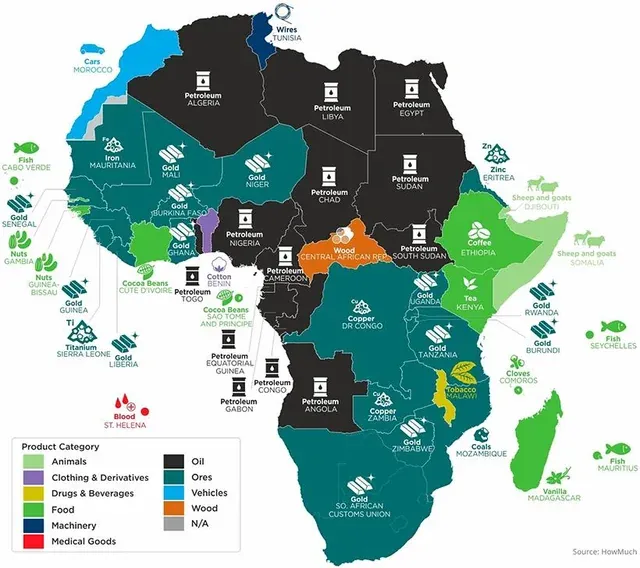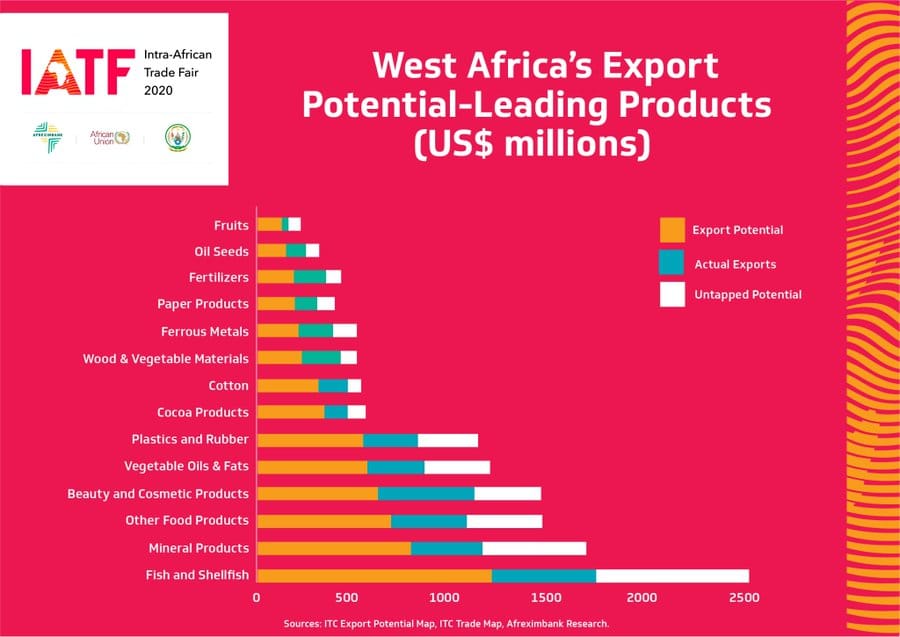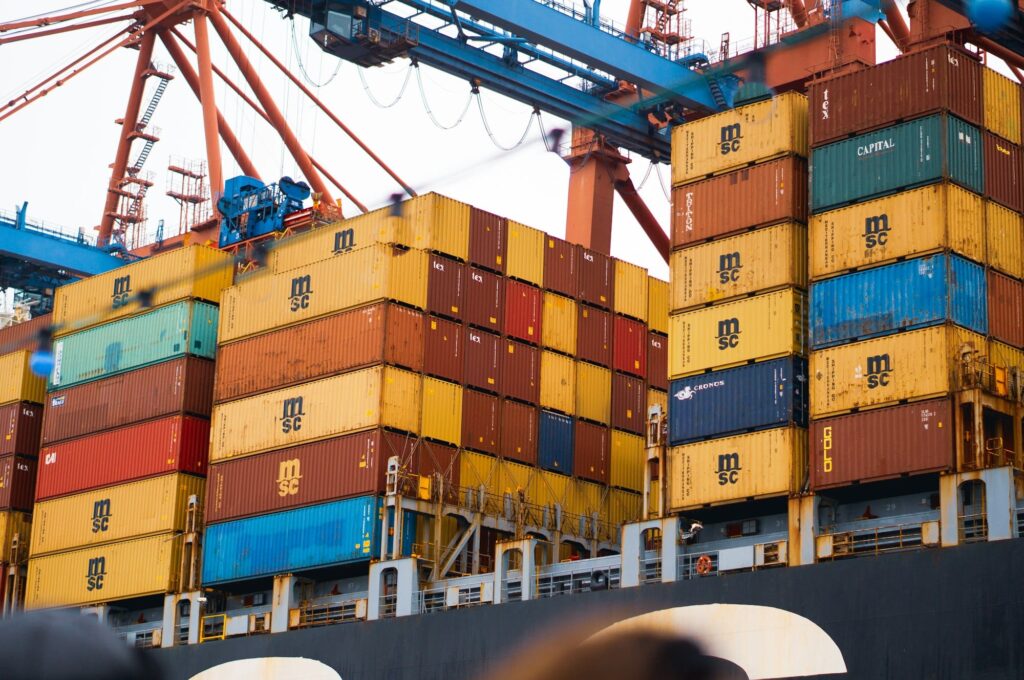In Summary
- According to recent data from the World Bank’s WITS platform, Sub-Saharan Africa’s total exports amount to approximately $396.4 billion.
- Some African countries on the list are raising their export revenue through the production and export of electrical and mechanical products.
- South Africa remains the leading exporter in Africa, but the continent still represents a relatively small share of global trade. The continent imports more than it exports.
- Besides South Africa, other significant exporters include Nigeria (crude oil), Angola (oil), Zambia (copper), and Algeria (gas).
Deep Dive!!
Africa boasts of a diverse economic landscape, with several nations leveraging their abundant natural resources and strategic initiatives to boost export revenues. It is no news that Africa imports more than it exports, and more than 98% of these exports are from outside the continent. So, it is often great news when a country makes substantial revenue from exports.
African countries need to prioritize exports as a means of raising revenue. Export revenue is a crucial source of foreign currency, which is essential for funding essential imports, stimulating economic growth, and creating jobs for citizens. Another area where export revenue is important is in promoting economic stability and diversification across the continent.
In addition, a strong export sector contributes significantly to a nation’s GDP, enabling investment in key sectors, and thus driving overall economic development. According to recent data by the World Integrated Trade Solution (WITS) data from the World Bank, Africa spends approximately $421.5 billion on total imports yearly, as against an estimated $396.4 billion it generates from total exports. One area of concern from the report is the revelation that a significant portion of Africa’s imports is food, with estimates placing the yearly food import bill at around $35 billion.
Below is an analysis of the top 10 African countries by export earnings, highlighting their primary exported goods, recent revenue figures, and key innovations implemented to ensure sustained growth. Check them out!

The Top 10 African Countries by Export Revenue, Key Commodities and Innovations
10. Côte d’Ivoire: With its primary export focus on cocoa beans, cashew nuts, and petroleum products. Côte d’Ivoire earned $18.4 billion from exports last year. As the world’s largest cocoa producer, Côte d’Ivoire has invested in processing facilities to add value locally. The country is also expanding its cashew processing capacity to increase export revenues.
9. Tunisia: The North African country has raised over $20 billion from export revenue according to the last export reports. Its major export commodities are textiles, electrical equipment, and agricultural products. Tunisia has invested in its textile industry, focusing on high-quality production to meet European standards. The country has also developed its electrical and mechanical industries, diversifying its export base.
8. Democratic Republic of the Congo (DRC): The mineral-rich country is a leader in the export of copper, cobalt, diamonds, and gold. According to recent reports, the country earns approximately $28.5 billion yearly from exports. The DRC has attracted significant foreign investment in its mining sector, particularly for cobalt and copper, which are essential for electric vehicle batteries.
7. Libya: The country is gradually finding its feet again, and has commenced the exportation of crude oil and petroleum products. Libya’s export revenue was $31.4 billion in 2023 and increased in 2024. There have been commendable efforts made by the government to stabilize oil production through infrastructure rehabilitation and securing oil fields to ensure consistent export levels.
6. Morocco: Since its focus in the exportation of electrical machinery, vehicles, fertilizers, and clothing. Morocco has been making good revenue from exports, with a report of earning $32.1 billion in the last fiscal year. The country has developed a robust automotive industry, becoming a leading car manufacturer in Africa. The country is also a significant exporter of fertilizers, leveraging its vast phosphate reserves.
5. Angola: Angola recorded over $32.3 billion in the last fiscal year from export revenue, focusing on Crude oil, diamonds, and liquefied natural gas. The country has implemented reforms to attract foreign investment in its oil sector and is investing in diamond mining technologies to increase yield and value addition.
4. Algeria: Petroleum, natural gas, and petrochemicals are the major export commodities of Algeria, earning them over $35.2 billion in the last fiscal year. The country has focused on modernizing its hydrocarbon sector through technological upgrades and has initiated programs to explore renewable energy sources to complement its fossil fuel exports.
3. Egypt: Egypt is known in the international market for its crude oil, petroleum products, chemicals, and textiles. According to reports, Egypt’s export revenue was $41.9 billion last year. The country is making significant progress after it diversified its export portfolio by investing in the chemicals and textiles industries. The country has also enhanced its port infrastructure to facilitate trade.
2. Nigeria: Africa’s most populous nation is a powerhouse in crude oil, natural gas, and agricultural products such as cocoa and rubber. The country grossed over $45.6 billion last year. The devaluation of the Naira by approximately 70% to N1,550/$ has made Nigerian exports more competitive internationally. The country is also harnessing the African Continental Free Trade Area (AfCFTA) to deepen intra-African trade and explore global markets.
1. South Africa: The king of exports in Africa, South Africa exports platinum, coal, motor vehicles, gold, and iron ore. In the last fiscal year in review, South Africa’s export revenue was approximately $88.3 billion, accounting for 19.1% of Africa’s total exports. The country has invested in advanced mining technologies to enhance mineral extraction efficiency. The automotive sector has also seen significant growth, with Volkswagen’s African unit achieving a record export of 131,485 Polos to European and Asia-Pacific markets in 2024. This success is attributed to improvements in infrastructure and a reliable power supply.

Conclusion
While we anticipate more export revenue, it is important to address the challenges faced by African nations in maximizing export revenue. There is still a high rate of commodity dependence evident in the continent. Overdependence on a few primary commodities can leave economies vulnerable to global market fluctuations. Many African countries heavily rely on exporting raw materials like minerals and agricultural products, which are often subject to price volatility, as against exporting refined products.
There is also a huge limitation associated with infrastructure. Poor transportation and logistics infrastructure often hinder the efficient movement of goods to export markets. The increase in trade barriers from tariffs and non-tariff barriers in international markets is also a huge limitation to African exports.
To address these and more concerns, African leaders must strategies to enhance export revenue in the continent by diversifying export products, allocating more investment in infrastructure, and actively engaging in international trade agreements to promote African exports in global markets. There is also a dire need to invest in capacity building, by supporting local businesses with training and technical assistance to enhance export competitiveness.
https://www.africanexponent.com/top-10-african-countries-projected-to-earn-highest-revenue-from-export-in-2025/


